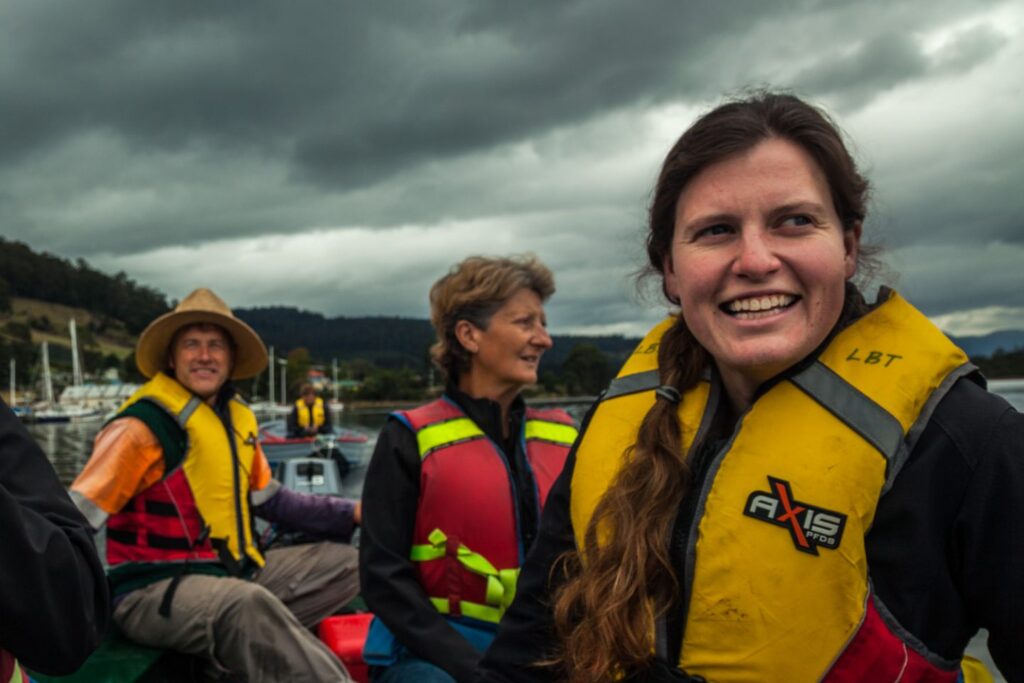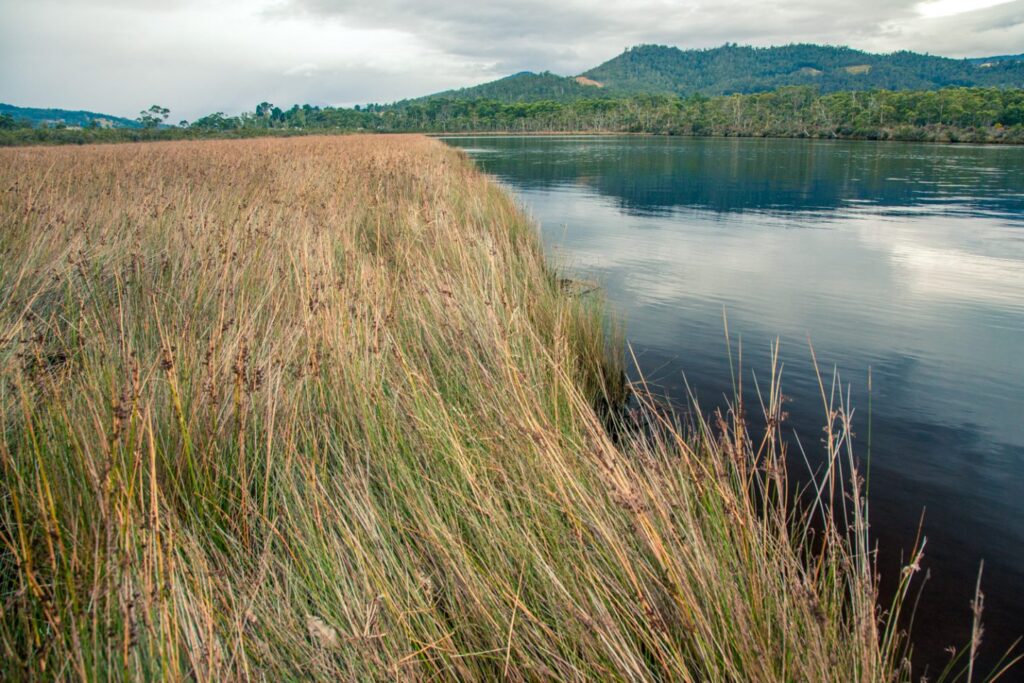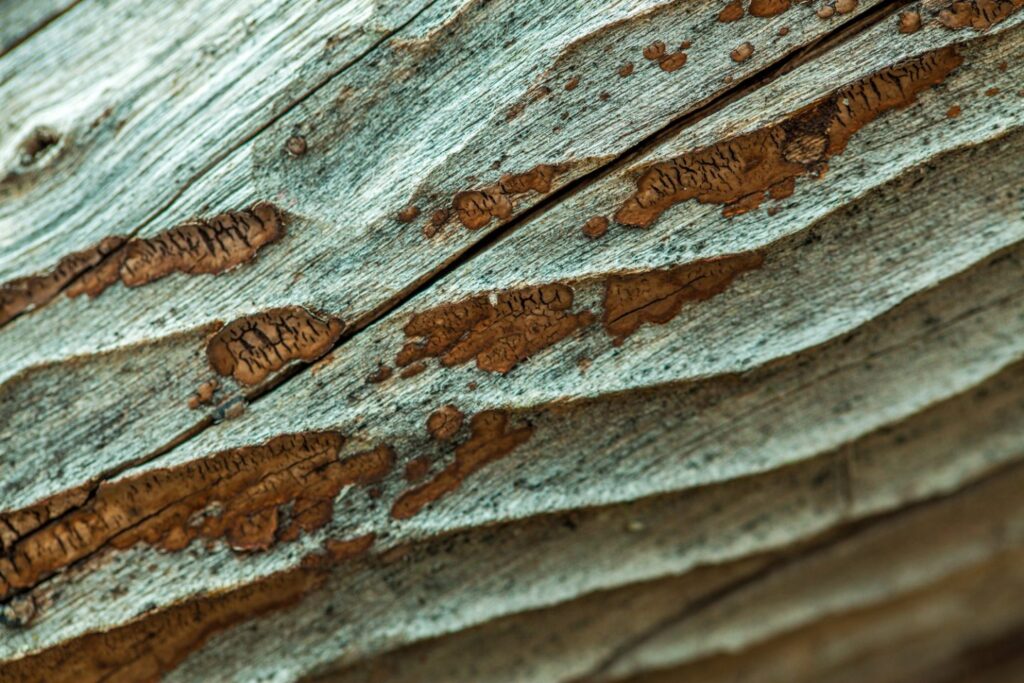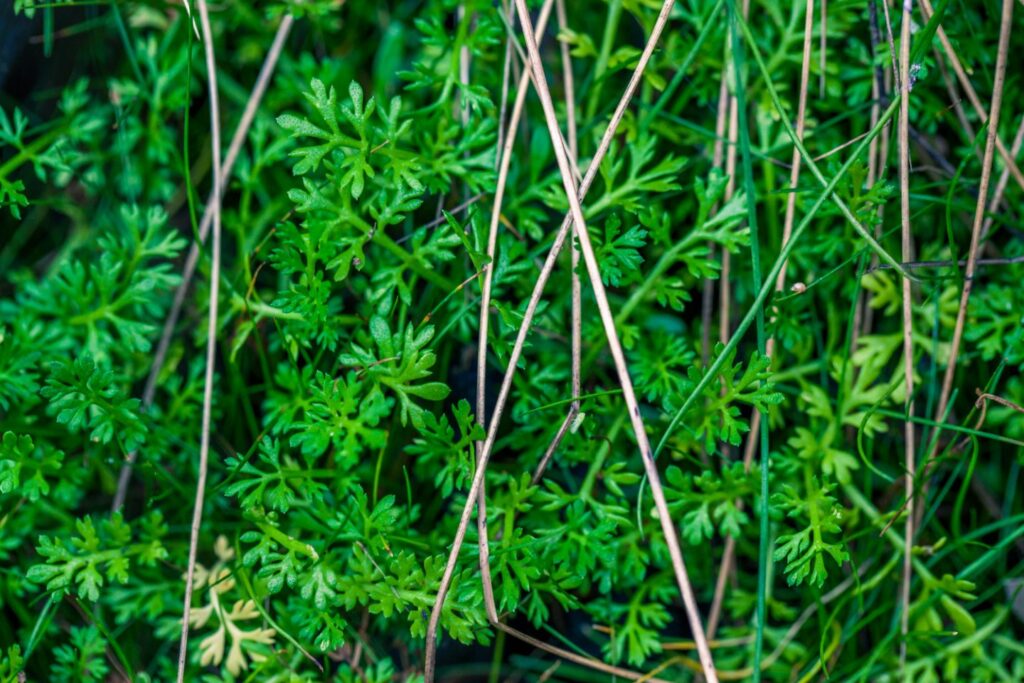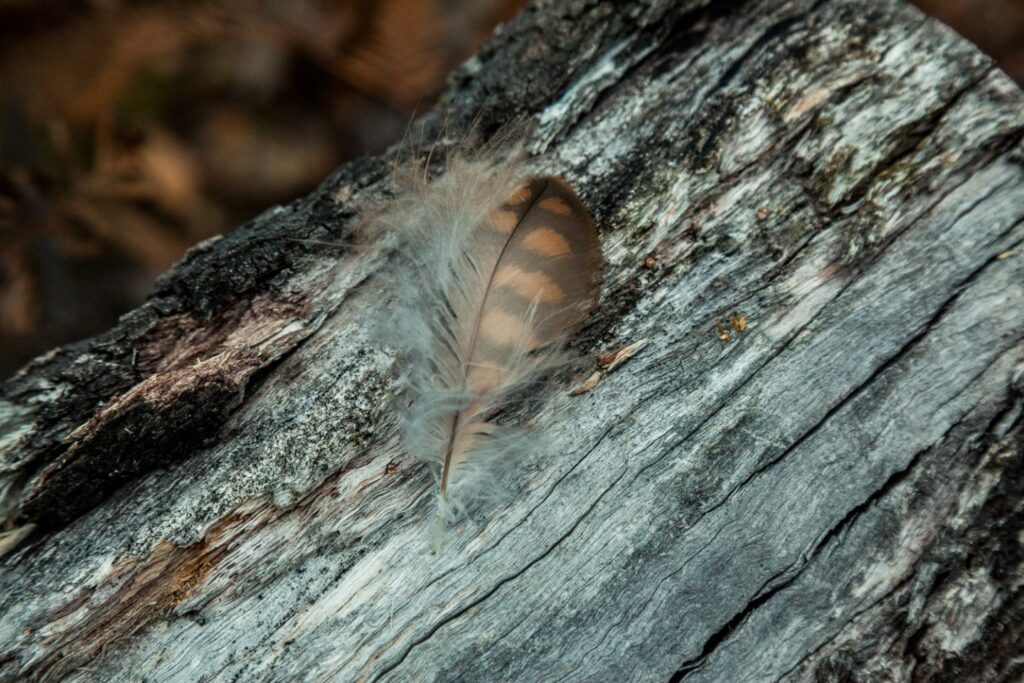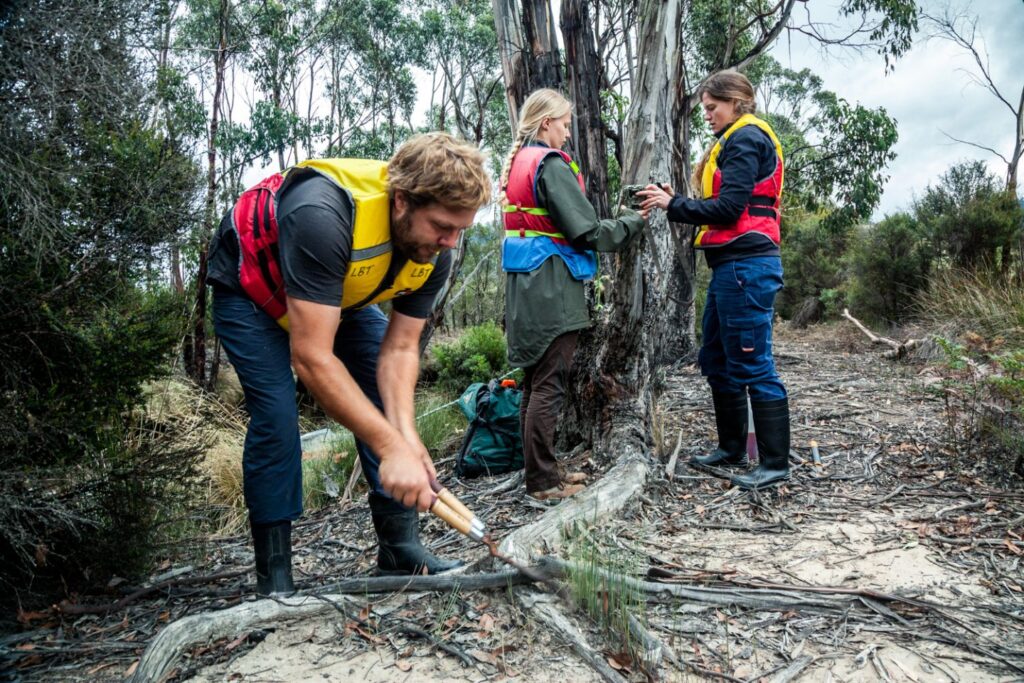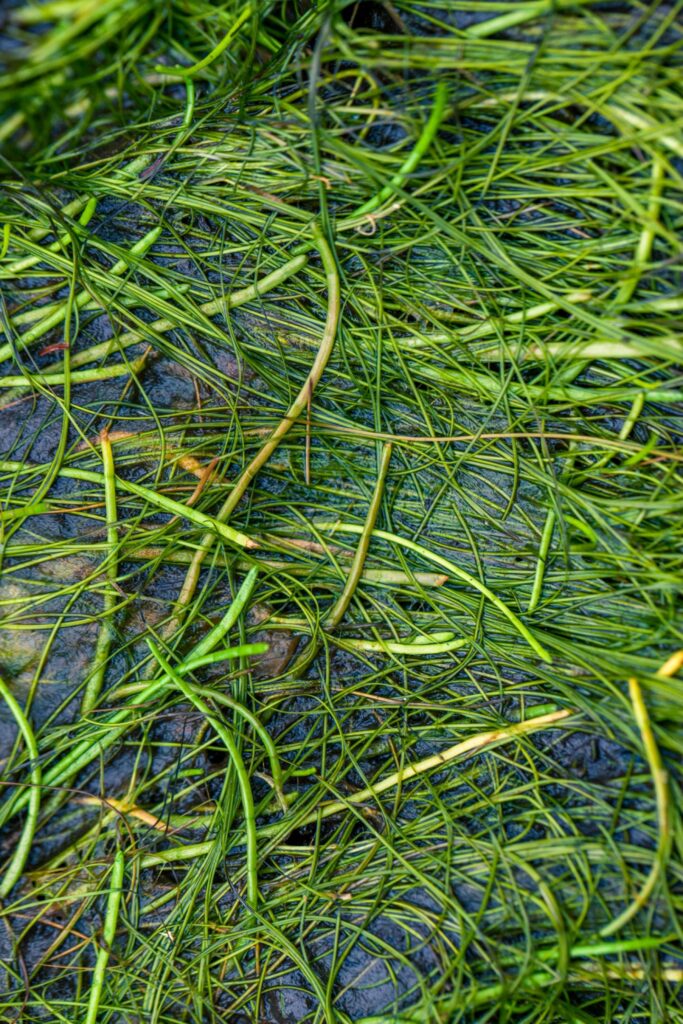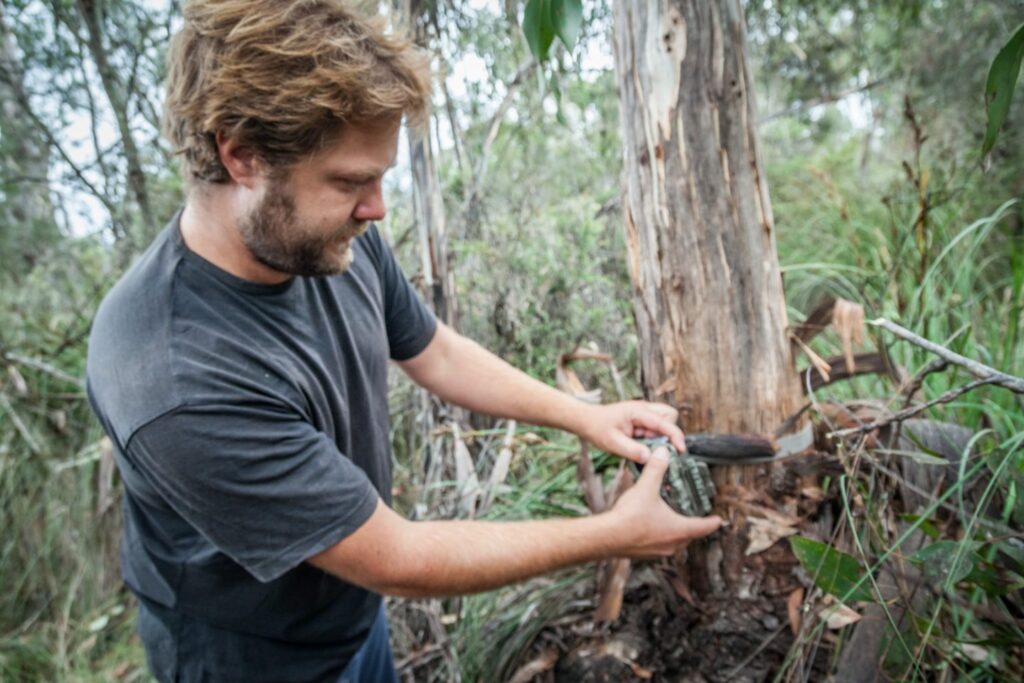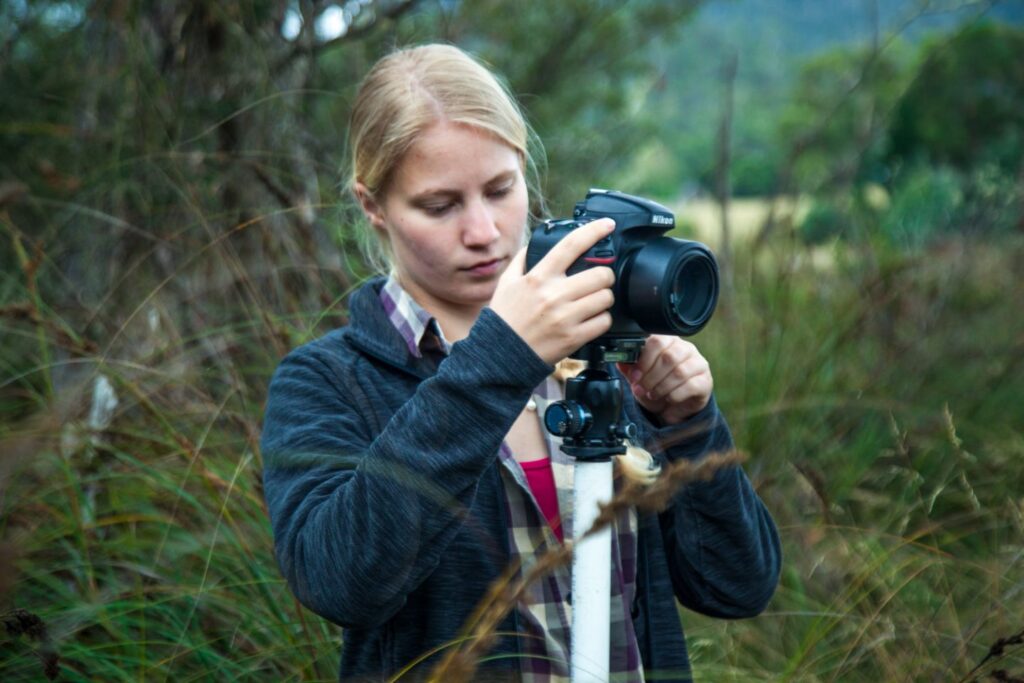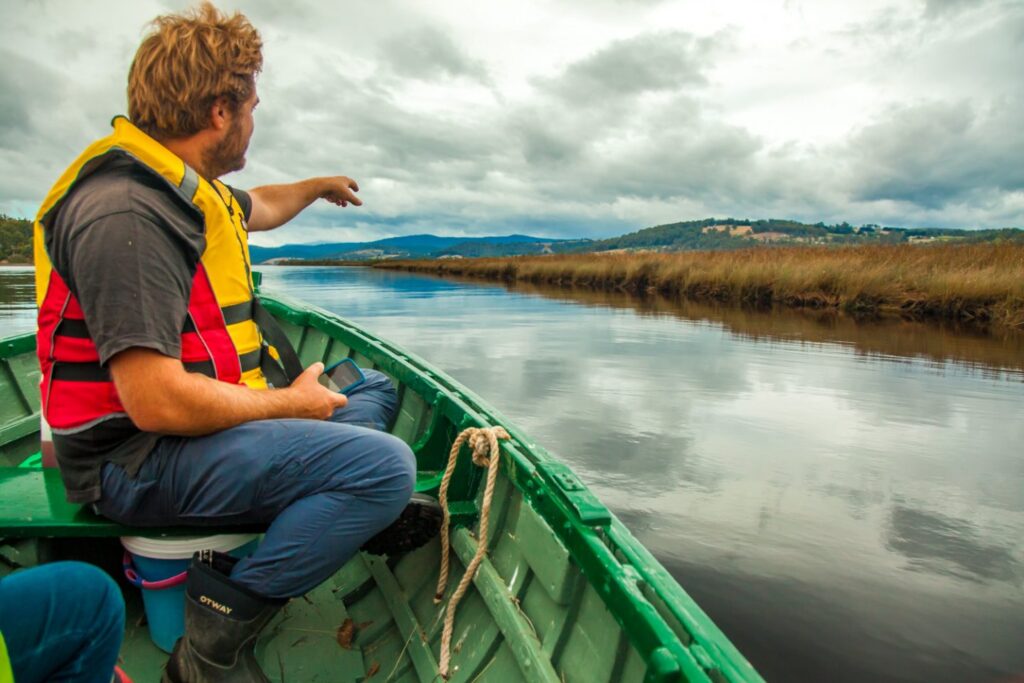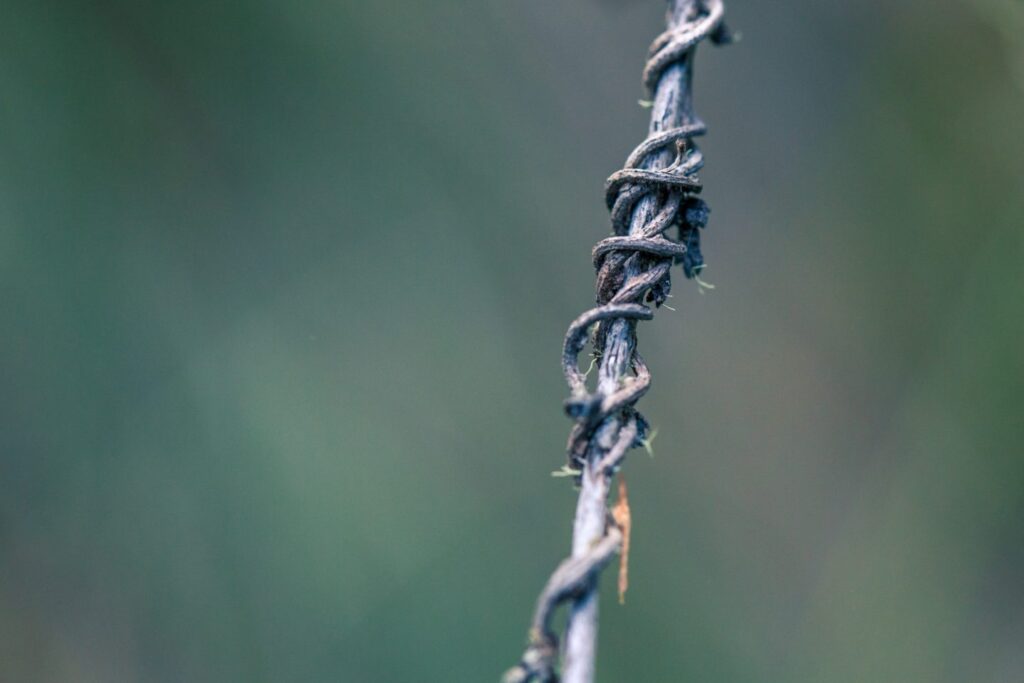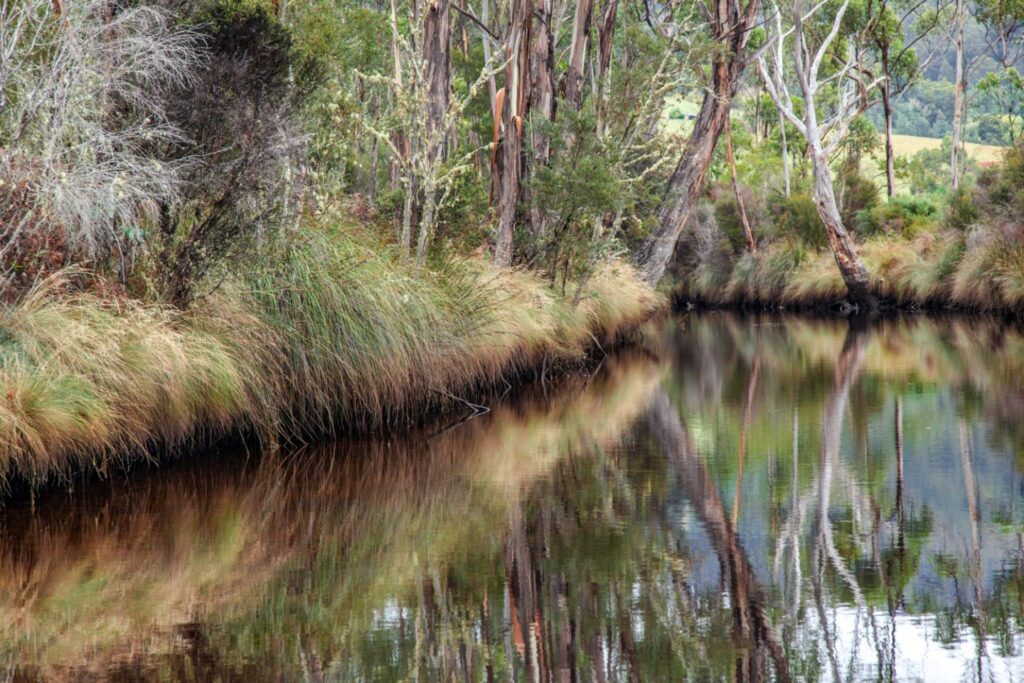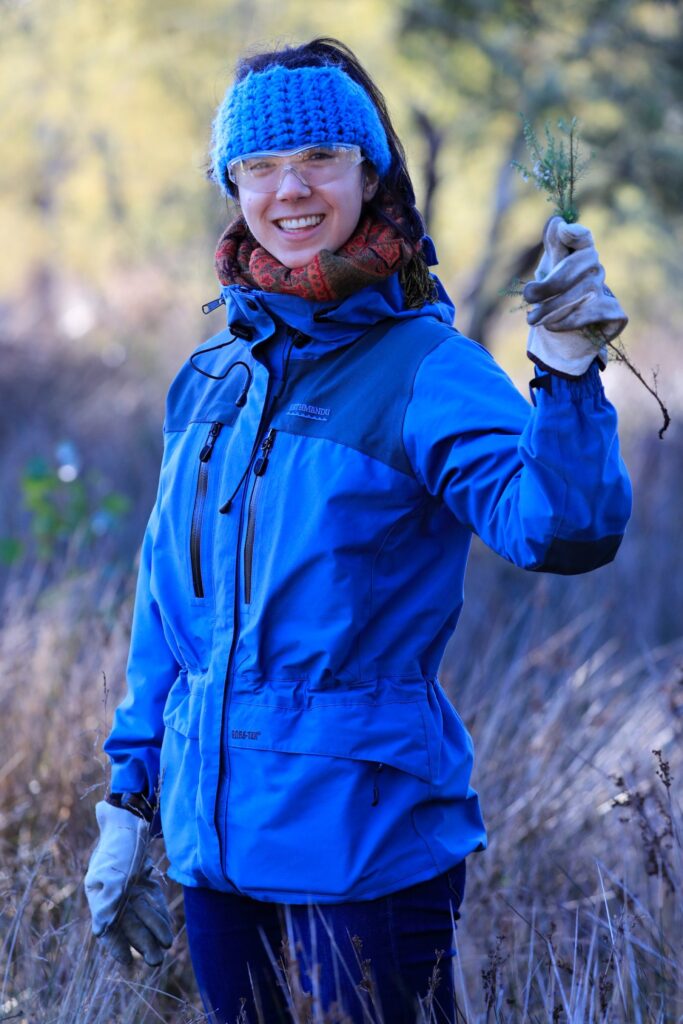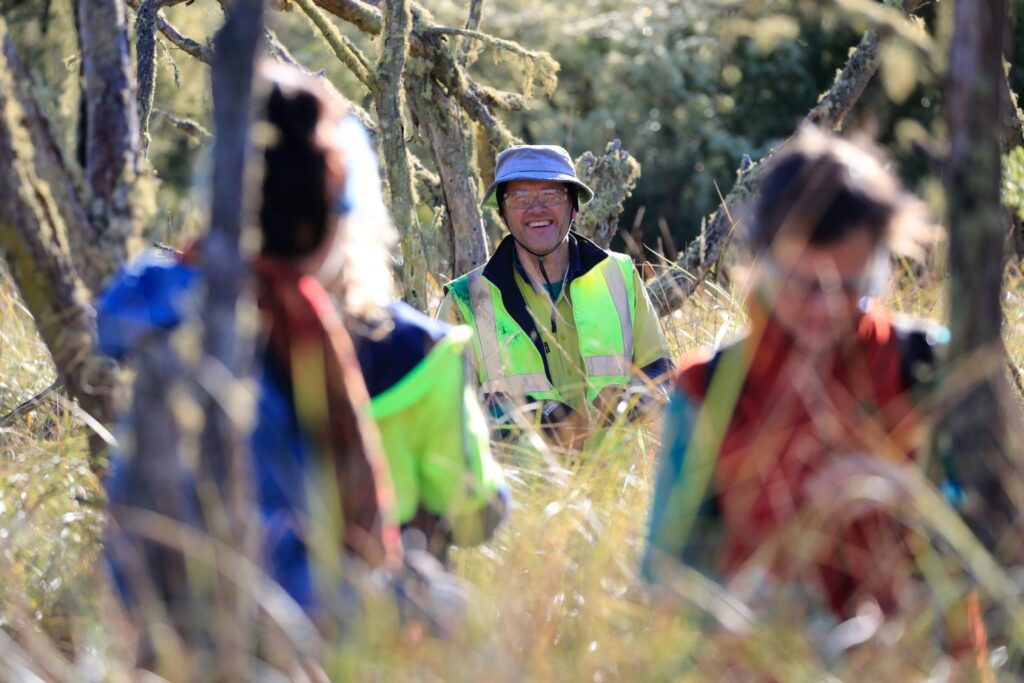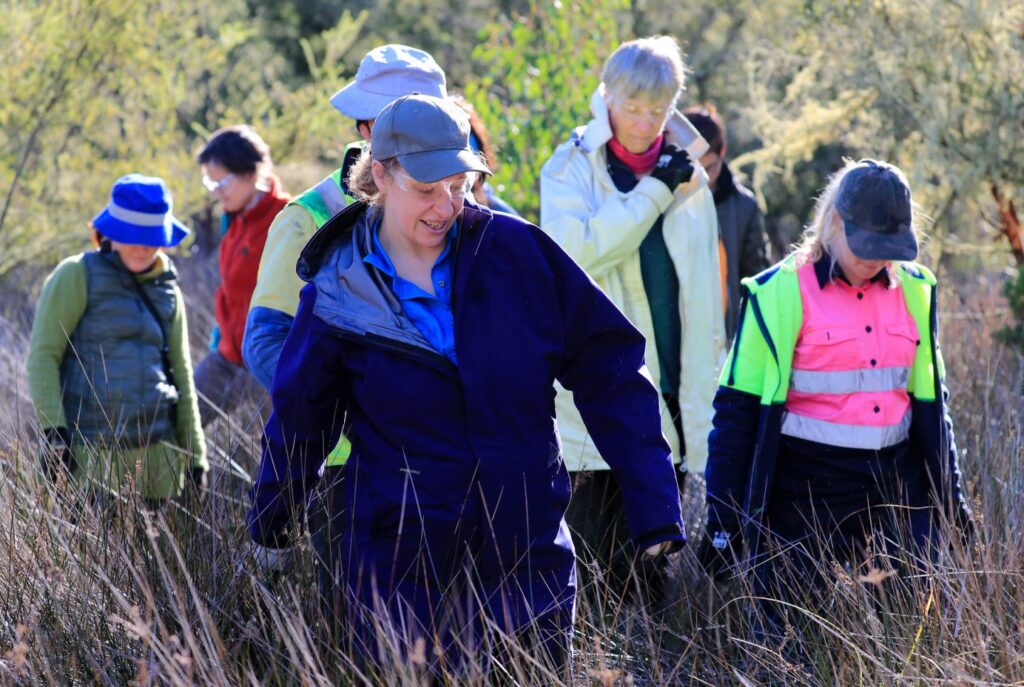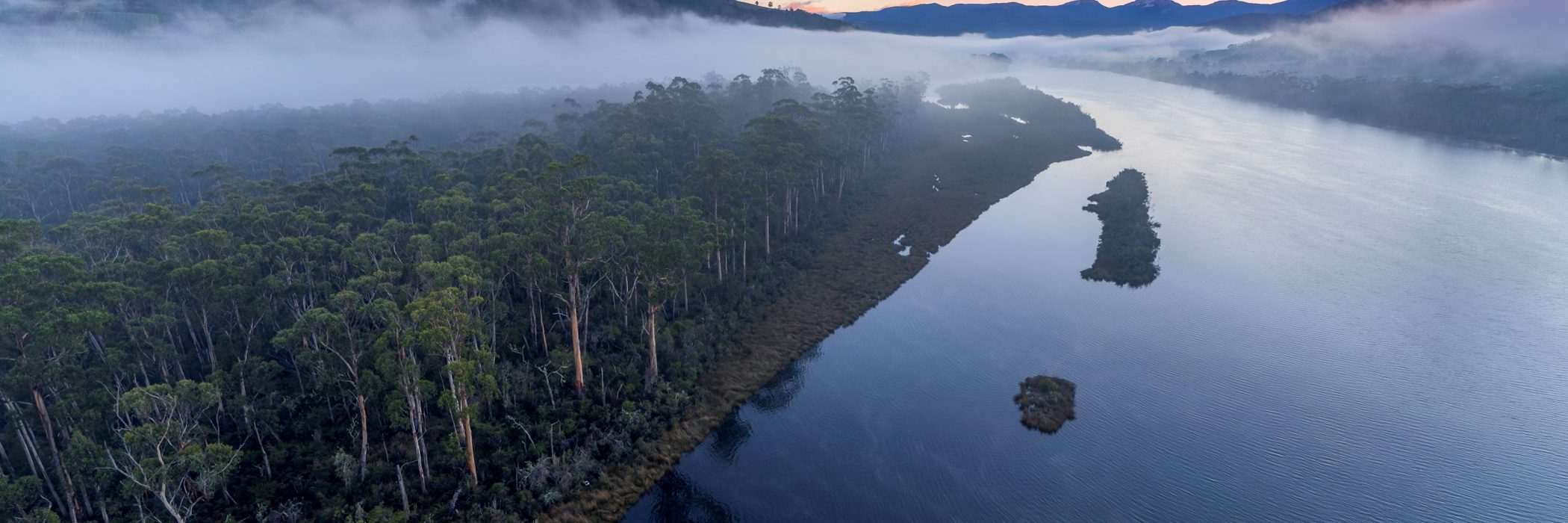Monitoring and Musings from Egg Islands Reserve
Human legacies linger amidst a thriving sanctuary for threatened plant and animal species at the Tasmanian Land Conservancy’s (TLC) Egg Island Reserve, located midstream in the Huon River.
Decades of human activities have played an important role in shaping the history and development of the Huon Valley.
During early European settlement, the Egg Islands – located a stone’s throw from the township of Franklin – were utilised for stock grazing, fruit and vegetable growing, timber harvesting, duck hunting and greyhound training, with some sources even reporting a football oval to have once existed on one of the islands.
Little evidence of this use remains today, with the islands most significant heritage feature being a canal across the south island, cut by convicts in 1838 to improve travelling time between Franklin and Cradoc. With an abundance of sedges and grasses cascading into the Huon River from either side, the narrow passage of water today feels more like an untouched wilderness hideaway than a human crafted canal.
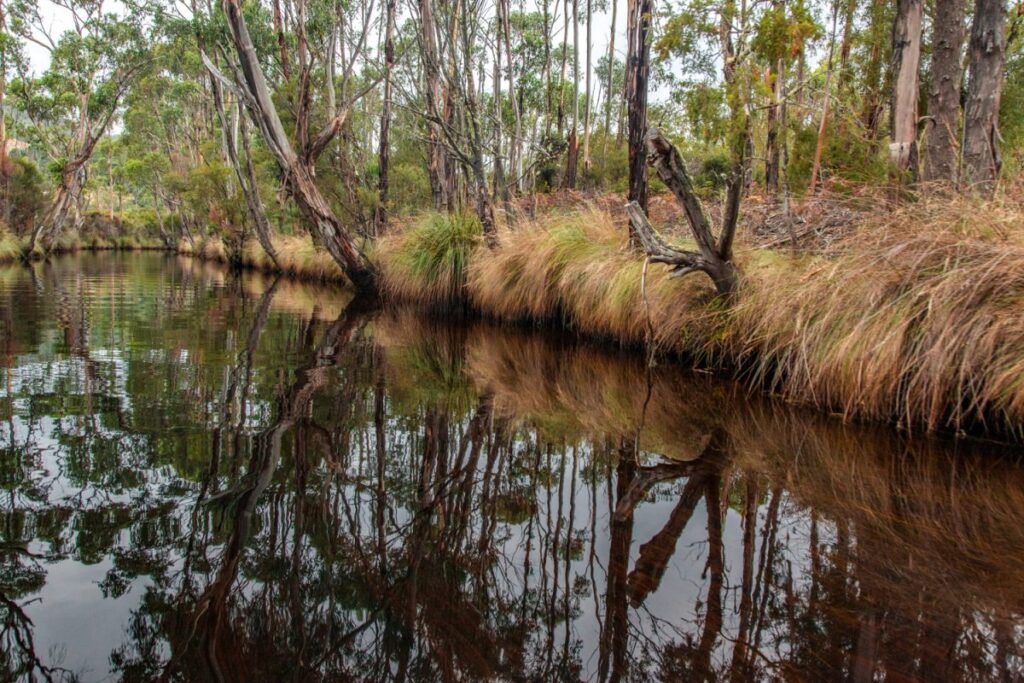
Embarking in a wooden boat captained by TLC volunteer Peter Venning, the TLC’s science team returned to the islands in March to continue monitoring the outstanding natural values of the 136 hectare permanent reserve.
Despite the islands proximity to the Huon Valley, the TLC’s Dr Sally Bryant explained the significance of the islands as a reliable conservation sanctuary.
“A variety of vulnerable small mammals rely on the natural water buffer to safeguard them from otherwise common looming predators,” she said, adding that the absence of feral cats allows pademelon, potoroo, brown bandicoots and eastern-barred bandicoots to thrive.
In addition to protecting susceptible fauna, pockets of endangered black gum swamp forest – the last of its kind in the state’s south east – stand defiant among the reserves mosaic of wetland and saline grassland communities.
The forest provides critical foraging and nesting habitat for 87 native bird species – including the endangered grey goshawk, swift parrot, and wedge-tailed eagle – while surrounding vegetation offers refuge for the endangered Australasian bittern.
Habitually shy and with a talent for camouflage, the Australasian bittern’s most identifiable feature is a loud booming call, heard at dusk and dawn throughout the breeding season.
The resonant and terrifying call of the bittern is thought to have originated the Aboriginal legend of the Bunyip – a vicious spirit creature that lurks in swamps, creeks and waterholes.
To ensure the best conservation outcomes for this cryptic bird, a collaboration between the TLC, NRM South and the University of Tasmania continues to explore automatic acoustic detection.
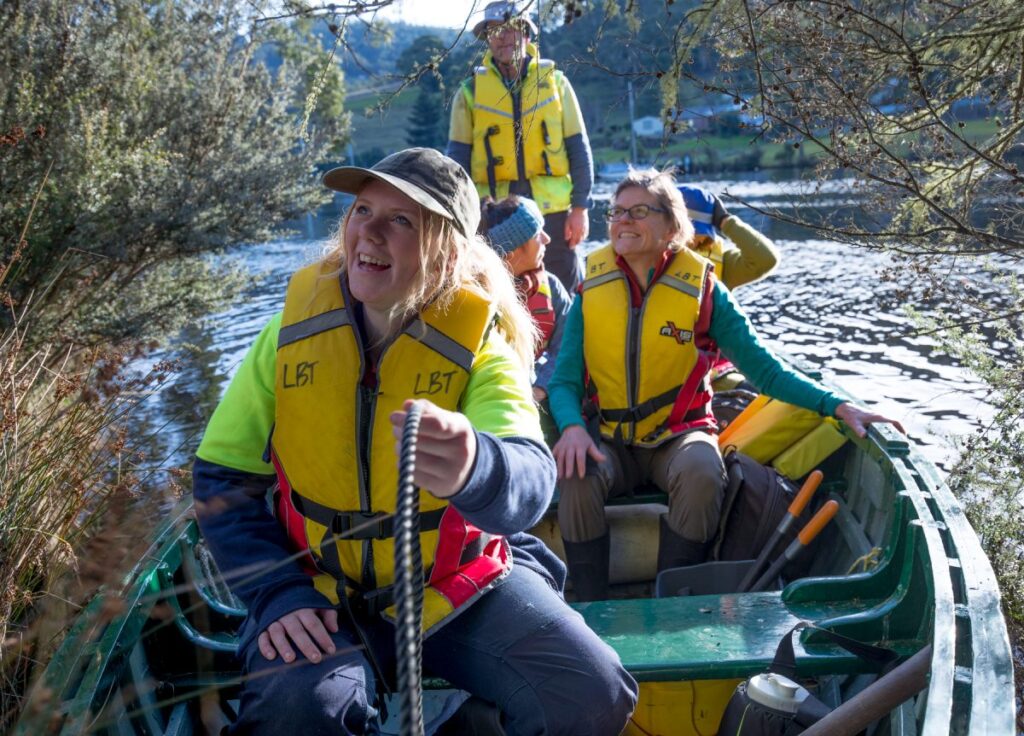
Since establishing the Egg Islands Reserve in 2008, the TLC has helped achieve a 99 percent reduction in weed density on the islands, maintained the condition of forest, wetland and saltmarsh, and provided opportunities for the community to visit the reserve for recreation, education and volunteering.
TLC Reserves Manager Denna Kingdom has been working with volunteers to manage the weeds at the Egg Islands Reserve since its purchase, when the invasive species Spanish heath was first identified.
“In one area it was almost the only plant species that you could see. It grew in thickets so dense that it was difficult to see a few metres into the distance, and in many places was around two metres tall. Luckily, it was limited to a five hectare area, but I left the islands feeling disheartened, thinking that controlling an area of weeds this dense would be nearly impossible,” she recalled.
Ten years on, TLC has run volunteer weeding working bees annually, with more than 280 individuals contributing 700 days to the task. This exceptional persistence has resulted in amazing outcomes, with the density of Spanish heath now estimated to be at less than one percent of the density it was in 2007.
This winter, 19 dedicated volunteers have contributed 27 days of effort, with the entire five hectare area of weeds methodically searched twice.
“The average plant height now is only five centimetres tall – a strong indication that we’re well on the way to eradicating this species on TLC’s reserve for good,” Denna explained.
“The native vegetation is responding well to the removal of the Spanish heath monoculture, too, with black gums, wattles and heathy shrubs all now far more common in the former weedy area than weeds. And the birds are seemingly appreciative of our work, with numerous species being observed foraging and heard calling on each of the volunteer working bees.”
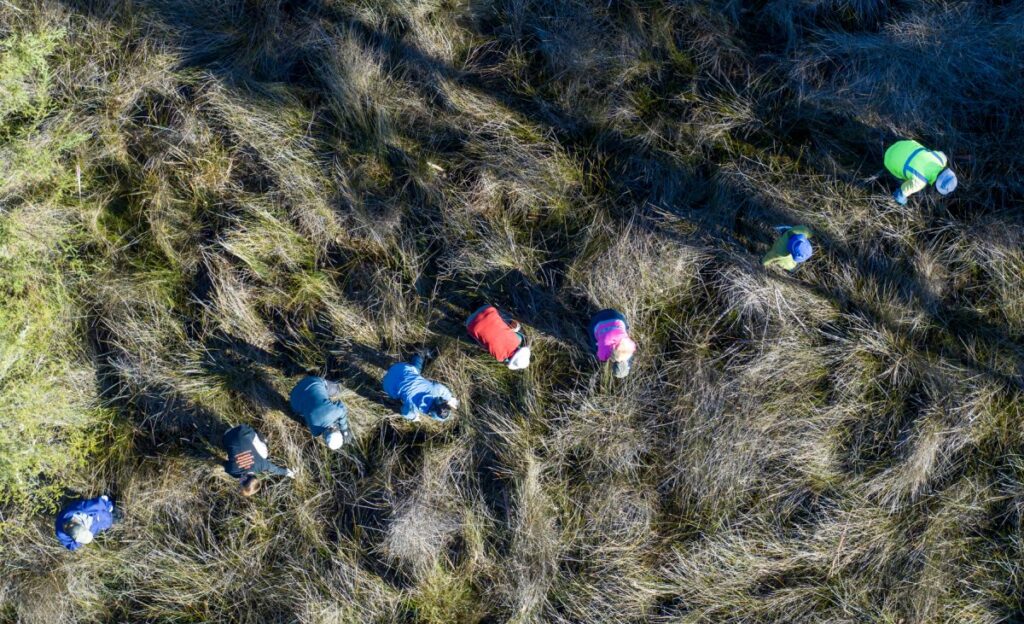
Data collection from fixed camera locations will continue help capture the many facets of the reserves complex and intricate ecosystems.
“This will help keep the islands predator free, control existing weed populations and prevent new weeds establishing,” Dr Bryant said.
Through employing simple, repeatable and robust scientific techniques (that barely warrant the removal of life jackets at monitoring sites) information can be gathered to inform conservation management, and protect the cultural and natural values of the Egg Islands for future generations.
The TLC thanks our incredible volunteers for their outstanding efforts in contributing to the lasting protection of the Egg Islands Reserve.
